Video
youtube
Looking for some more moody/ eerie sounding swing music to give you that Tower of Terror/ The Shining feeling for the Halloween season? Sit back, pour a drink, and pretend you’re in an abandoned and haunted hotel club of the 1930s with this ambience.
#Tower of Terror#Tip Top Club#Disneyland#Walt Disney World#Disney World#Twilight Zone#swing#swing music#ambience#Halloween
6 notes
·
View notes
Photo
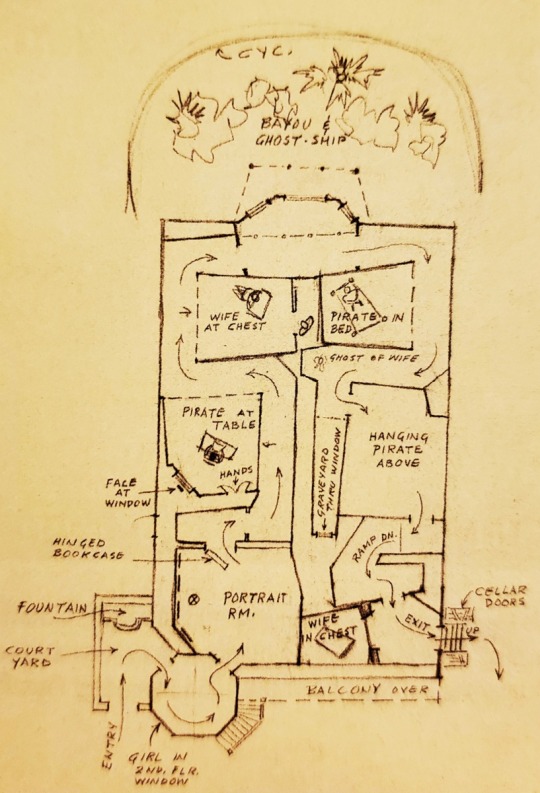

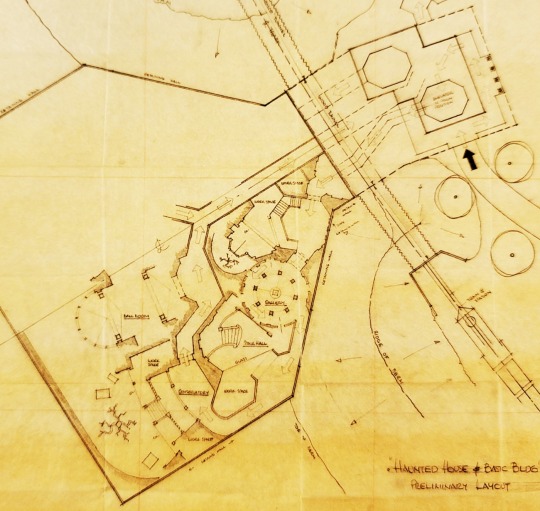
Some early layout plans and drawings for the Haunted Mansion idea in its early design stages.
The first layout is from early 1957 by Bruce Bushman, most likely based on Ken Anderson’s original concept of the Capt. Gore and Priscilla storyline. In this original iteration, guests would be welcomed by the mansion’s butler Beauregard, as he would tell the tale of the owners of this house - sea captain Bartholomew Gore, and his new wife Priscilla. As visitors venture through this walk thru, they’d soon discover that Gore all along is actually a bloodthristy pirate. In the scene “Wife at Chest,” Priscilla opens up a hidden chest in the attic, discovering for herself Gore’s secret identity. She screams and the scene goes to black, as Beauregard was to inform guests that Priscilla was never seen again. As people venture onward, there’d be sights of a ghost ship, and a scene with Gore in his bedroom being tormented by the ghost of the murdered Priscilla. In a later scene, it appears that Gore has hanged himself, and guests see or hear the apparition of Priscilla locked in the old sea chest before they leave.
The second layout comes from later in 1957, and this time follows Ken Anderson’s new storyline of Bloodmere Manor. The backstory was that it was a haunted house that had been cursed and transported to Disneyland completely intact for New Orleans Square. There was still to be a human servant leading people through the house in this version, however, the main guide was now a friendly figure called the Lonesome Ghost, who was to speak in a Peter Lorre style voice. It would have started in the Entry Stair Hall, where a menacing figure was to appear in the shadows from the landing above and shake the chandelier above visitor’s heads. After walking through a Gallery of staring portraits, the Lonesome Ghost was to greet everyone in the Library inside of a mirror, saying the whole house was excited for the wedding of the Mansion’s Bride to her fiance. The ghost guide was to lead then through a Gallery of changing portraits, before slipping through a secret passage. Guests would then make their way through a Bedroom housing a ghoulish couple (along with the Lonesome Ghost being seen in the bathtub, washing up for the wedding), and then into a Salon where the Headless Horseman was to make his arrival galloping outside the windows. Next was the Tower, where the vanishing ceiling above would reveal the hanging corpse of the Best Man above people’s heads. Then down a mirrored hallway, where apparitions would appear in the large mirrors floating alongside guests, as they all made their way into the Drawing Room. The Drawing Room was to be a large octagon shape room, also lined with mirrors. In every mirror, various villainous ghosts from history and literature were to appear, with the likes of Dracula, Frankenstein’s Monster, the Canterville Ghost, Jack the Ripper, Lucrezia Borgia, and others, as the Lonesome Ghost was to mingle amongst them. With the clanging of bells, the ghosts were to all disappear, and signal the start of the ceremony. The climax would be in the Great Hall, where an invisible organist would signal the festivities. The ghostly Bride and Groom would materialize, with the Groom removing the Bride’s head from her shoulders, and kissing it. The Bride’s body would refuse the Groom by violently slapping him, and plunging the entire ghostly wedding party into chaos. Fleeing the danger, the human guide was to escort guests out through the neighboring Trophy Room, into another secret fireplace passage, and outside to safety.
The final layout iteration here was after Ken Anderson had left the project, and was drawn up by Disney architect and designer Marvin Davis (no relation to Marc) in late 1961 - three years before Marc Davis would be brought on to design his own version of the attraction. The 1961 Marvin Davis layout was designed based on the illusions and characters Yale Gracey and Rolly Crump designed in 1959, and it’s interesting to note how much Marvin’s design would be close to the final attraction. The ride itself wouldn’t open until 1969, but as far back as 61, Marvin here had already designed the basic look and shape of the Mansion facade, the shape and size of its show building, and the idea of having elevators transporting guests down under the railroad tracks to it. Also it’s interesting to see that Marvin originally planned to have two duplicate walk through’s in the same show building to increase guest capacity. Using the story and illusion ideas created by Ken, Yale, and Rolly, Marvin’s version appears to include a large Stairwell overlooking the outside as its first scene; a rotunda shaped Gallery; another large Stair Hall; a Conservatory overlooking the grounds; and the finale taking place once again in a large Ball Room, before exiting out through a long hallway.
#Haunted Mansion#concept art#layout#ken anderson#Rolly Crump#yale gracey#marvin davis#disneyland#walt disney world
55 notes
·
View notes
Text
Marc Davis’ Original Haunted Mansion Outline
Back in mid 1964, Walt brought Imagineer/ animator Marc Davis to work on the Haunted Mansion project, and to come up with multiple ideas. That summer, Marc created ideas, as well as wrote an entire story outline for a walk-through version of this attraction. It’s interesting to see how even early on, so many of Marc’s initial ideas wound up in the ride: an invisible ghost host, the stretching room, a gallery of morphing portraits, the seance circle with a disembodied medium, a raven, and even alluding to a story that would be later used as inspiration for Phantom Manor. Here is Marc’s original storyline:
“The Stretching Room
The audience moves into the elongating room. The Ghost Host introduces himself as their invisible guide. He also introduces the attendant who is dressed as a butler who will also accompany the group on their dangerous adventure in the Haunted Mansion. The Ghost Host recommends that they stay close to the sound of his voice because there are many unpredictable things that may happen and they will be much safer if they stay near him.
He says, “The dead spirits have some resentment for those who wish to stay alive!” But he adds, “They are a gregarious group and they are always in search of new company. They are always pleased to meet a new ghost. Don’t let it be you!” He warns them to watch out for clutching hands without bodies, cold drafts of air, and etc.
The Ghost Host points out the salient points of the elongating room. As the room elongates his voice may stay high in the room and gradually feed through an echo chamber. He calls attention to the fact that there are no visible exits to the room. He says there is a way out and with a flash of lightning and a clap of thunder, we see a figure hanging and swaying from the ceiling. The Ghost Host doesn’t recommend this coward’s way out. His voice drops with a dull plop to the floor. The voice is back to normal, the walls open and he leads the group with the aid of the butler, who beckons, into the next scene.
The Portrait Hallway
This room is filled with oversized furnishings, paintings, and sculptures. The Ghost Host tells the story of first one and then another of the people portrayed in the paintings and sculptures. As he does, some visual effect takes place. They talk or change in a magic ghostlike manner.
The final picture is perhaps behind black drapes which raise as the Ghost Host calls our attention to it. As the drapes part we see a painting that has everything in it except a figure. There is perhaps a vague image where the figure should be.
The Ghost Host reacts in a frightened manner. He explains that this is terrible because this is the most dangerous ghost in the Mansion. When he climbs out of his picture, he mingles with the guests until he has turned one of them into a ghost. He describes the ghost’s appearance and its omnipotent powers. He suggests again that everyone should stay in a tight group; this evil ghost loves to pick off stragglers. He suggests that the group be wary of sliding panels, guests of cold air, and etc. We move into the next scene through the fireplace.
The Séance Circle
The Ghost Host leads the audience into an overburdened Victorian room. This room is hung with heavy draperies in deep reds. There is a table in the center of the room. Several chairs are near the table. The Ghost Host explains that in former times this room was used by the famous medium, Madame Z. And if this audience is a receptive one, they may see a very unusual séance. A spirit medium producing other spirits.
The Ghost Host’s voice moves to the center of the room. He talks as he invisibly moves the chairs around the table. He rearranges objects that are sitting on the table. The Ghost Host calls for Madame Z to enter, but she is reluctant because of the ghost (she refers to him by name) who is on the prowl from the portrait gallery. The Ghost Host, however convinces her that she should not let her audience down (the show must go on).
The medium enters the room. She pulls a chair out from the table and we see the chair seat sink down with her weight. She pulls the chair in and the long table cover reacts to her knees. She readjusts the objects on the table as she asks the audience to join hands. She warns if they feel a very cold hand it might be the villain ghost. Please be careful! She asks them to join her in her incantation to call the good spirits from the other world.
She brings back a series of spirits. We would use all of the clichés commonly used by a medium. Bells ring, a tambourine jiggles, a chief appears, a trumpet plays, and other standard characters appear. Audience participation is suggested.
Soon, however, things begin to get out of hand. The medium becomes very upset. The good spirits are being intimidated by an evil presence. The Ghost Host suggests that this is a dangerous situation and we had best leave the séance room.
The Ghost Club Room
This is a large comfortable room with many little alcoves. The Ghost Host explains that it is possible that if we are in the proper frame of mind, we may actually be able to see a few real live ghosts.
The ghosts in this room are much like old actors in the motion picture relief home. They are constantly boring each other with stories of their great successes. Each has a trick that he did to scare the life out of people when was an active haunting ghost. Each in turn does his trick, each topping the other. These can be surprise gags such as a head flying off a figure or funny business gags.
But as in the previous act something begins to go wrong. The presence of the villain ghost makes itself felt and these older retired ghosts are frightened. Whatever we have used to indicate the nearness of the villain ghost would be repeated here. With frightened yells and screams the retired ghosts disappear and the Ghost Host, who now gives a slightly evil laugh, suggests we too, should disappear. We leave and go to the next scene.
A Room That Has a Garden View
The Ghost Host leads the audience to this room, which has open floor to ceiling windows. There are candles on the mantel. One is lit. A raven is perched on a bookcase. Outside it is moonlight.
The Ghost Host explains that while it may not look it, this is a room where great evil has taken place. (He may tell of the bride and her fiancé who were killed by a rejected suitor. The bride and her fiancé might appear in an embrace.) In any case, the Ghost Host now says he feels that he should reveal himself to the audience. He has grown quite attached to them. He starts a wild mocking laugh. It clouds up outside. The curtains blow inward. It starts to rain along with thunder and lightning. Outside we see a figure that takes form and it moves into the room. The rain comes into the room with the figure and a pool of water forms around its feet. This is our Ghost Host, but it also follows the description of the villain ghost that escaped from the painting earlier. The Ghost Host is now all villain. He murdered the young couple.
The raven on the mantel says the audience can’t get out soon enough. “Go through the bookshelf. Go through the bookshelf.” Bookshelf opens and we exit through churchyard.
71 notes
·
View notes
Photo


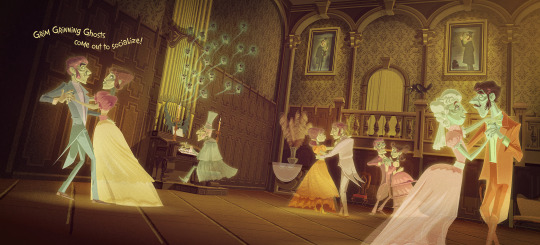
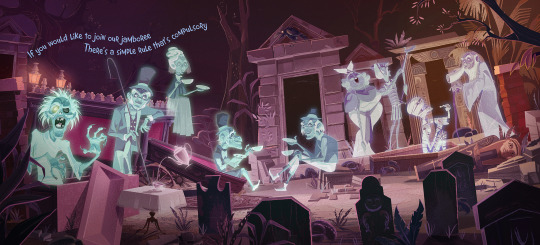

Disney Parks presents the Haunted Mansion illustrated by James Gilleard
572 notes
·
View notes
Photo

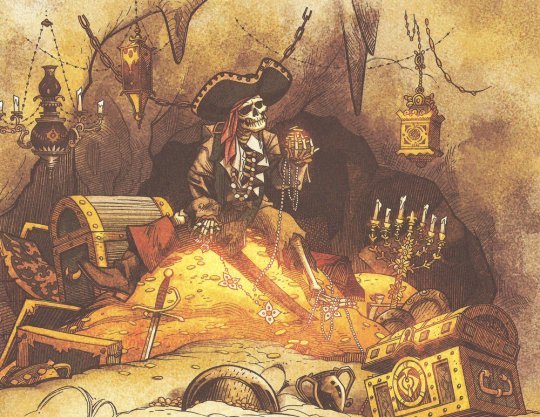
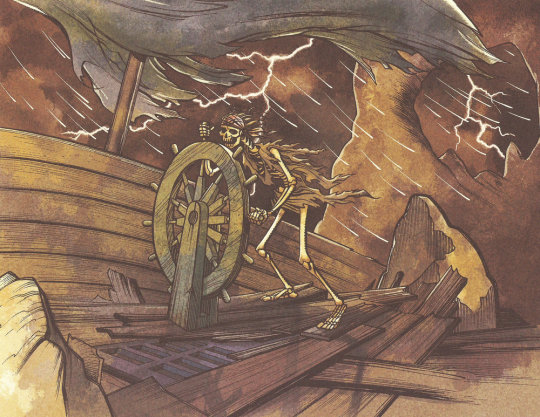
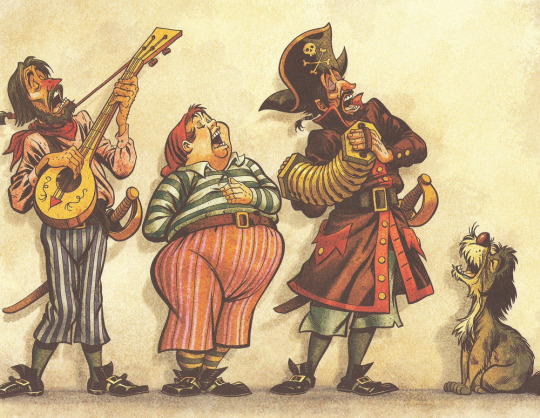



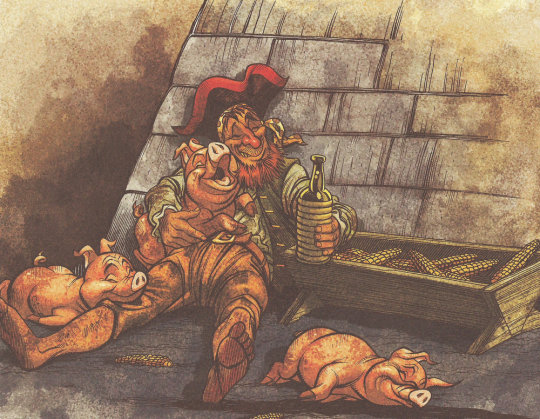
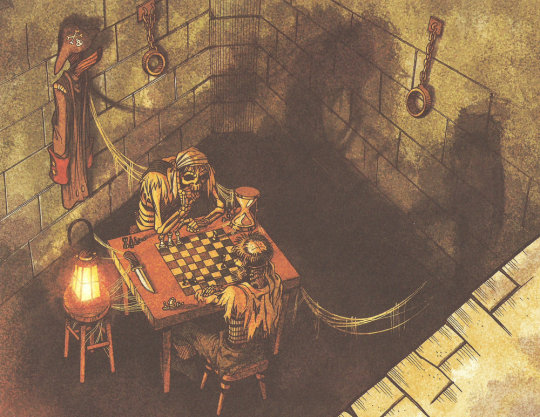
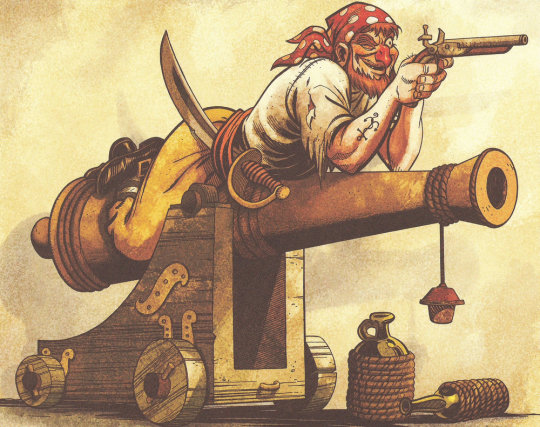
Pirates of the Caribbean collectible prints, inspired by Marc Davis' original sketches, sold at the parks.
26 notes
·
View notes
Photo

Haunted Mansion phone wallpaper
288 notes
·
View notes
Photo
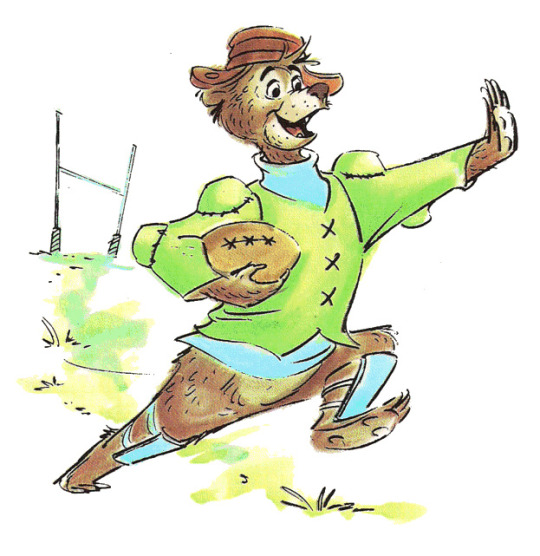




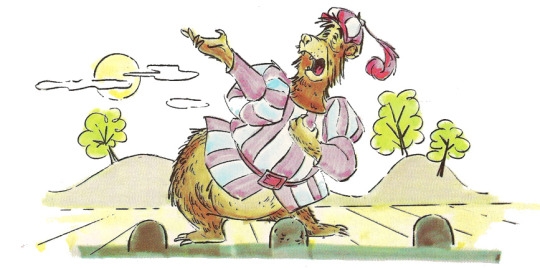




Illustrations of the Country Bear Jamboree’s star performers from the original LP album book.
#Country Bear Jamboree#Disney World#Disneyland#Henry#Big Al#Teddi Barra#Liver Lips McGrowl#Trixie#Terrence#art
130 notes
·
View notes
Photo
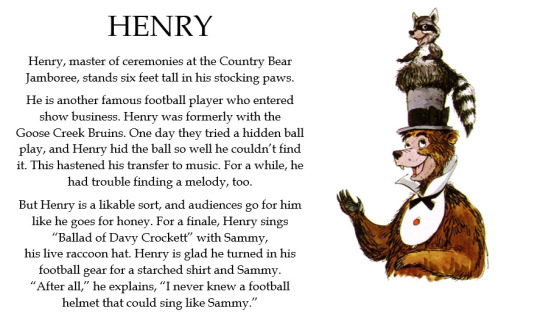

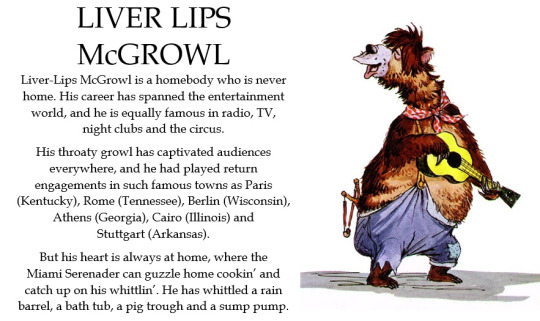

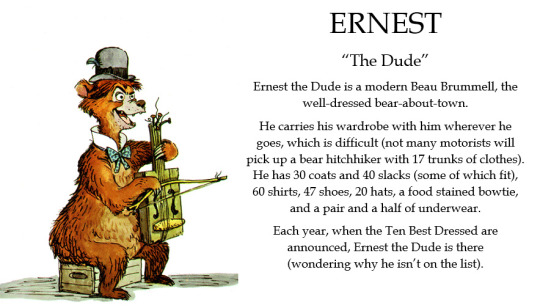
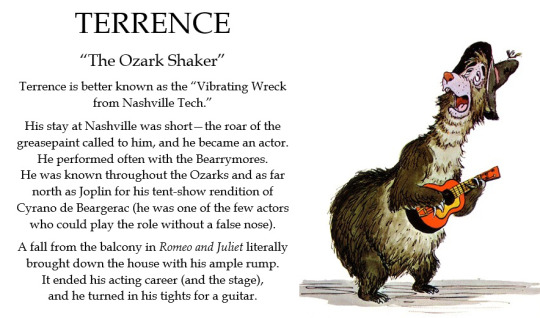
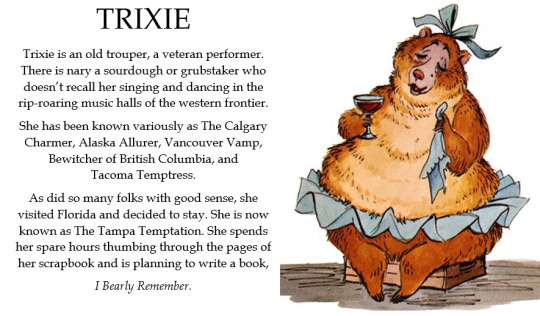



One of my favorite hidden details about the Country Bear Jamboree, is that all of the bears actually have official backstories given by the Imagineers. Most likely written by show writers Al Bertino and Marc Davis, these mini bios were published around the time of the opening of the attraction at Walt Disney World.
#Country Bear Jamboree#Marc Davis#Walt Disney World#Disneyland#Henry#Teddi Barra#Big Al#Trixie#Terrence#Liver Lips McGrowl#concept art#Imagineering#Backstory#Biography
2K notes
·
View notes
Photo
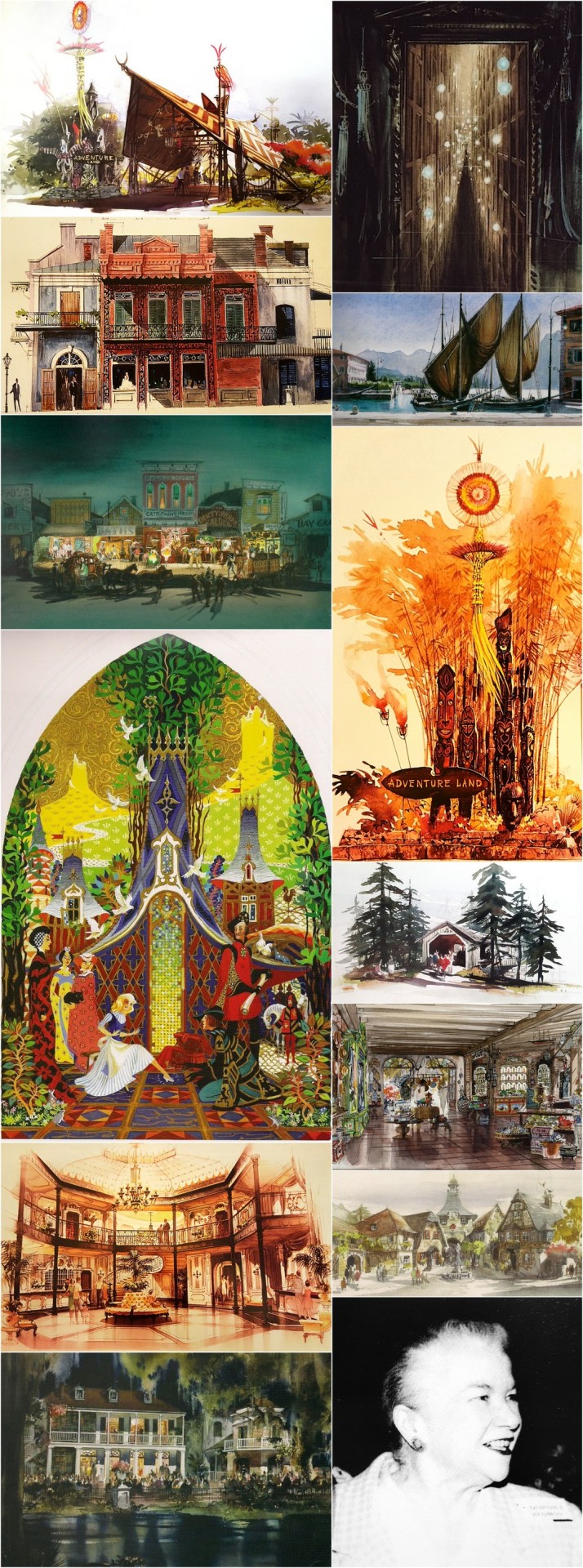
One of the most influential Disney Imagineers, Dorothea Redmond’s work delights visitors of all ages who visit Disneyland and Walt Disney World. Even before joining Disney, Redmond had a long body of work as an art director and scenic illustrator for many classic films with RKO, Paramount, and Universal.
She joined Imagineering in 1964, starting work on the redesigning of The Plaza Inn at Disneyland. Since then, her contributions as a concept artist and designer can be found all around the parks: New Orleans Square, the Blue Bayou, Club 33, The Haunted Mansion (particularly the endless hallway), the Cinderella Castle murals, Disney World’s Main Street, Adventureland, Frontierland, and Fantasyland, Fort Wilderness campground, and Epcot’s World Showcase.
#Dorothea Redmond#Disneyland#Disney World#Imagineer#Imagineering#Cinderella Castle#Haunted Mansion#Blue Bayou#New Orleans Square#Main Street#Fantasyland#Adventureland
19 notes
·
View notes
Photo
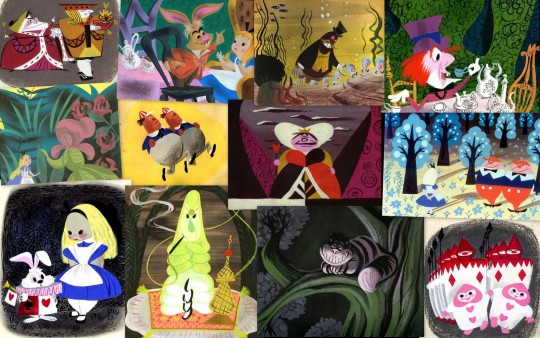
Alice in Wonderland - character visual design by Mary Blair
#Mary Blair#Alice in Wonderland#Disney#animation#White Rabbit#Cheshire Cat#Queen of Hearts#Tweedledee#Tweedledum#Mad Hatter#March Hare#Caterpillar
10 notes
·
View notes
Photo
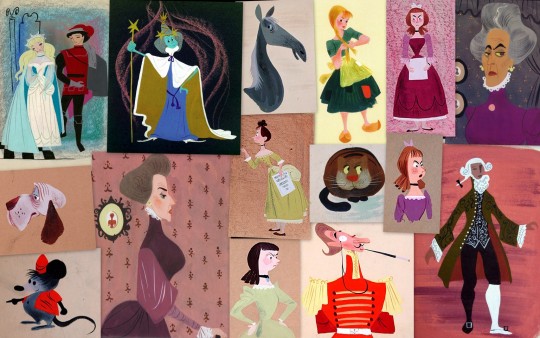
Cinderella - character visual design by Mary Blair
#Cinderella#Disney#animation#Mary Blair#Lady Tremaine#Anastasia#Drizella#Gus#Bruno#Fairy Godmother#Prince Charming#Grand Duke#Major#Lucifer
11 notes
·
View notes
Audio
I’ve always been more baffled by this change too at WDW more then any other. I understand them keeping the vocals for the Singing Busts, but I find it especially odd they changed all the other vocal tracks, but kept the original Mummy (Allan Davies) and Old Man (Dal McKennon). I’m grateful for that though, especially since McKennon is a Disney vocal legend having been the voice of the Owl in Sleeping Beauty, the fox in Mary Poppins, and can still be heard today as the safety spiel on Big Thunder and as Ben Franklin in The American Adventure. Davies also played an important role in Disney vocal history - in 1983, when they redid all the soundtracks for the New Fantasyland dark rides, Davies was the vocal contractor for the new soundtracks to Peter Pan’s Flight, Alice in Wonderland, Pinocchio’s Daring Journey, and Mr. Toad’s Wilde Ride.
While I don’t mind the new graveyard vocals, I still miss the original old ones, simply because so many of the original singers were Disney/ Hollywood recording studio legends. While they might have been far from household names, Disney fanatics and movie buffs are sure to have heard their work:
- Bill Lee (the Duke) is probably mostly well known as both the singing voice of Roger in 101 Dalmatians, and as the singing voice of Capt. Von Trapp in the film version of The Sound of Music. He also was the baritone in The Mello Men singing group, and has been heard in everything from as a card in Alice In Wonderland to a singing pirate in Pirates of the Caribbean. He was also one of the most prolific Hollywood “ghost singers,” having dubbed for actors in numerous film musicals such South Pacific and Thoroughly Modern Millie. You can also hear him as a singing ram in Mary Poppins, and see him onscreen briefly in the 1965 version of Rodgers & Hammerstein’s Cinderella.
- Betty Wand (Duchess) Like Lee, Wand was a popular “ghost singer” in Hollywood, having dubbed for South Pacific, West Side Story, and Gigi. She can also be heard as one of the “Lovely Ladies of the Ensemble” in the Enchanted Tiki Room singing “Let’s All Sing Like the Birdies Sing.”
- Loulie Jean Norman (Opera Soprano) - Norman’s contribution as a Hollywood studio vocalist cannot be stated enough. Most people probably know her voice as the vocalist to the Stark Trek theme song, the singer of the Flipper theme song, as well as the backing soprano to the original “The Lion Sleeps Tonight” record. She also was a background vocalist for a “who’s who” of pop singers at the time: Frank Sinatra, Nat King Cole, Bing Crosby, Elvis Presley, Ray Charles, and Judy Garland. Norman’s contributions to Disney can also be heard on the soundtracks to Cinderella, Alice in Wonderland, and Peter Pan, as well as one of the voices for Bunny, Bubbles, and Beulah in Country Bear Jamboree.
- Candy Candido (Prisoner) A proficient bass player and gravelly voiced singer, Candido’s unmistakable voice can be heard and recognized by most Disney fans as Maleficent’s head goon in Sleeping Beauty, an Alligator in Robin Hood, and Fidget in The Great Mouse Detective.
- Ernie Newton (Beheaded Knight) Like many of the other graveyard singers, Newton was a vocalist who has sung in the chorus for many a Hollywood musical, and provided vocal backup for stars like Sinatra and Garland. Newton can still be heard today at the Disney parks as Pierre in the Enchanted Tiki Room, and almost half of the singing pirates in Pirates of the Caribbean with Thurl and Paul Frees.
So while I don’t mind the new changes to WDW’s graveyard, I’m just saddened that so many of these Disney/ Hollywood vocal legend’s voices are now gone from the attraction. At least though they can still be heard in California and Tokyo’s Mansions.
[[Obscurely, WDW’s Graveyard vocals were updated nine years ago.]]
157 notes
·
View notes
Photo

Disney concept art wallpaper: Villain Sidekicks/ Secondary Antagonists
#Disney#animation#wallpaper#villain#Smee#Peter Pan#Huntsman#Snow White#Maleficent#Goons#Jasper#101 Dalmatians#LeFou#Beauty and the Beast#Sir Kay#The Sword in the Stone#Stabbington Brothers#Tangled#Cheshire Cat#Alice in Wonderland#Anastasia#Drizella#Cinderella#Duke of Weselton#Frozen#Kaa#The Jungle Book#Lawrence#The Princess and the Frog#Kronk
10 notes
·
View notes
Photo

Disney concept art wallpaper: The Villains
#Disney#animation#villains#wallpaper#concept art#Ursula#Little Mermaid#Lady Tremaine#Cinderella#Maleficent#Sleeping Beauty#Mother Gothel#Tangled#Dr Facilier#princess and the frog#scar#The Lion king#Queen of Hearts#Alice in Wonderland#Prince Hans#Frozen#hades#Hercules#Captain Hook#Peter Pan#Wicked Queen#Evil Queen#Grimhilde#Snow White#Frollo
13 notes
·
View notes
Photo

Early conceptual art/ visual design for some of Disney’s princes/ leading men.
Art by Chen-Yi Chang, Marc Davis, Jean Gillmore, Dan Haskett, Byron Howard, Glen Keane, Brittney Lee, Sue Nichols, Bill Schwab, Gustaf Tenggren, and others
#Disney#animation#princes#heroes#Prince Charming#Cinderella#Snow White#Prince Phillip#Sleeping Beauty#Prince Eric#Little Mermaid#Beast#Beauty and the Beast#Aladdin#John Smith#Pocahontas#Shang#Mulan#Hercules#Naveen#Princess and the Frog#Kristoff#Frozen#Flynn Rider#Tangled
31 notes
·
View notes
Photo

New phone wallpaper, featuring animation of some of my favorite Disney princes/heroes of the Renaissance and Revival eras.
#Disney#animation#phone#wallpaper#Beast#Beauty and the Beast#Kristoff#Frozen#Naveen#Princess and the Frog#Flynn Rider#Tangled#Prince Eric#the little mermaid#Tarzan#Aladdin#Hercules
803 notes
·
View notes
Photo
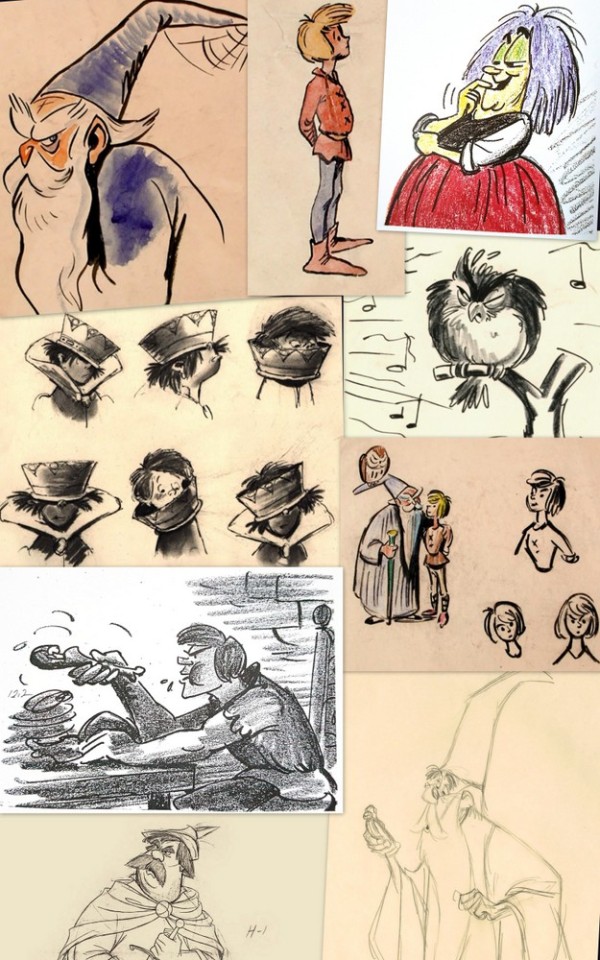


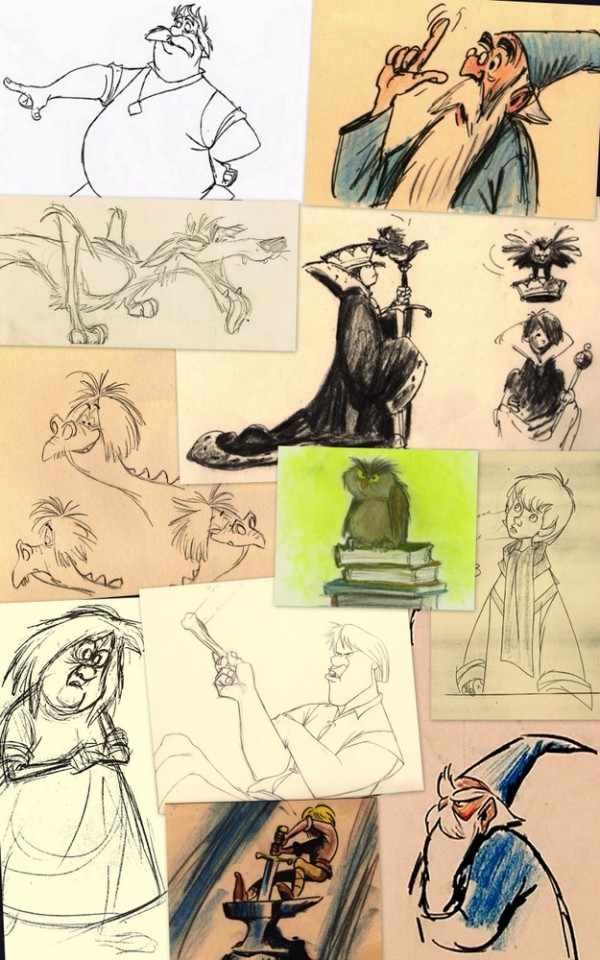
The Sword in the Stone: Character Design and Animation
Art by Bill Peet, Milt Kahl, Frank Thomas, and other Disney artists
#The Sword in the Stone#Disney#animation#Merlin#Arthur#Archimedes#Madam Mim#Mim#Sir Ector#Sir Kay#dragon
30 notes
·
View notes